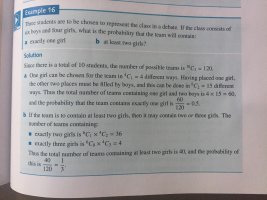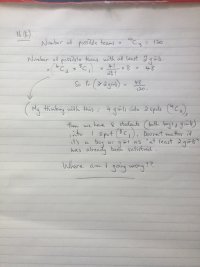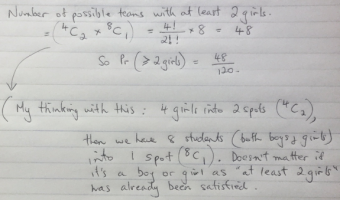Hi all. I'm doing a counting/probability problem here.
I can see how the correct answer for part b is arrived at by counting the number of combinations for "2 girls" then counting the number of combinations for "3 girls" , and adding these results.
But I've attached my first way of approaching it, which is wrong. Wondering if anyone can tell me why my approach doesn't give the correct answer. I know it's probably something obvious that I'm missing.
Thanks
I can see how the correct answer for part b is arrived at by counting the number of combinations for "2 girls" then counting the number of combinations for "3 girls" , and adding these results.
But I've attached my first way of approaching it, which is wrong. Wondering if anyone can tell me why my approach doesn't give the correct answer. I know it's probably something obvious that I'm missing.
Thanks




